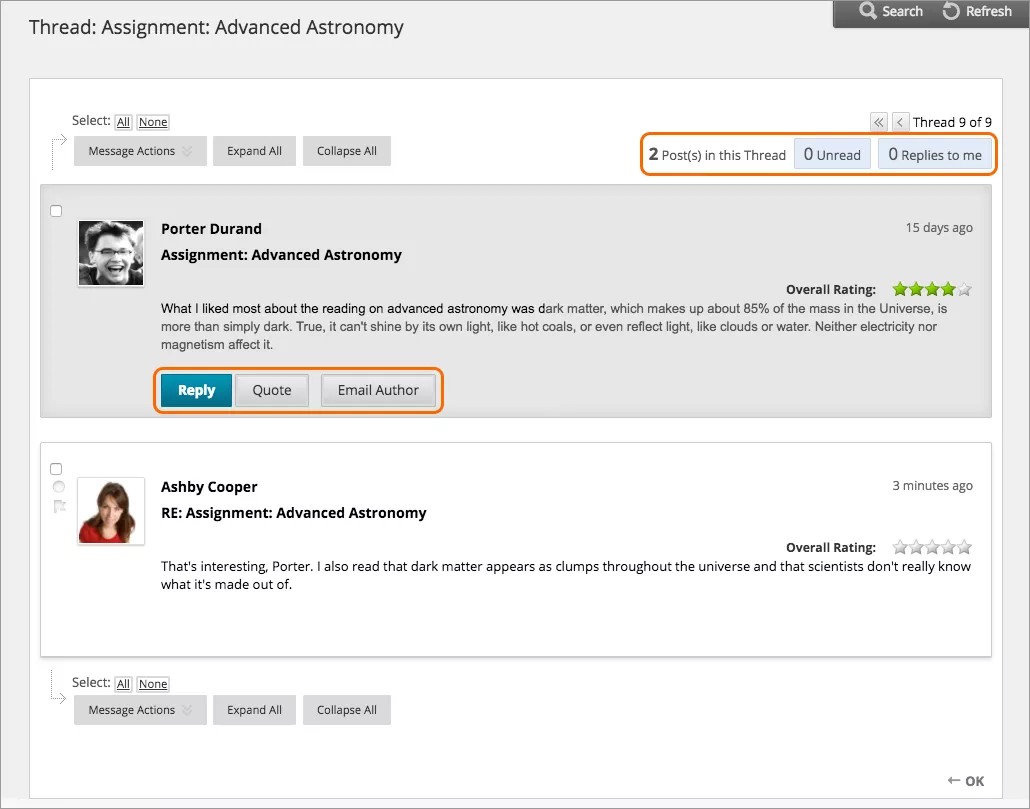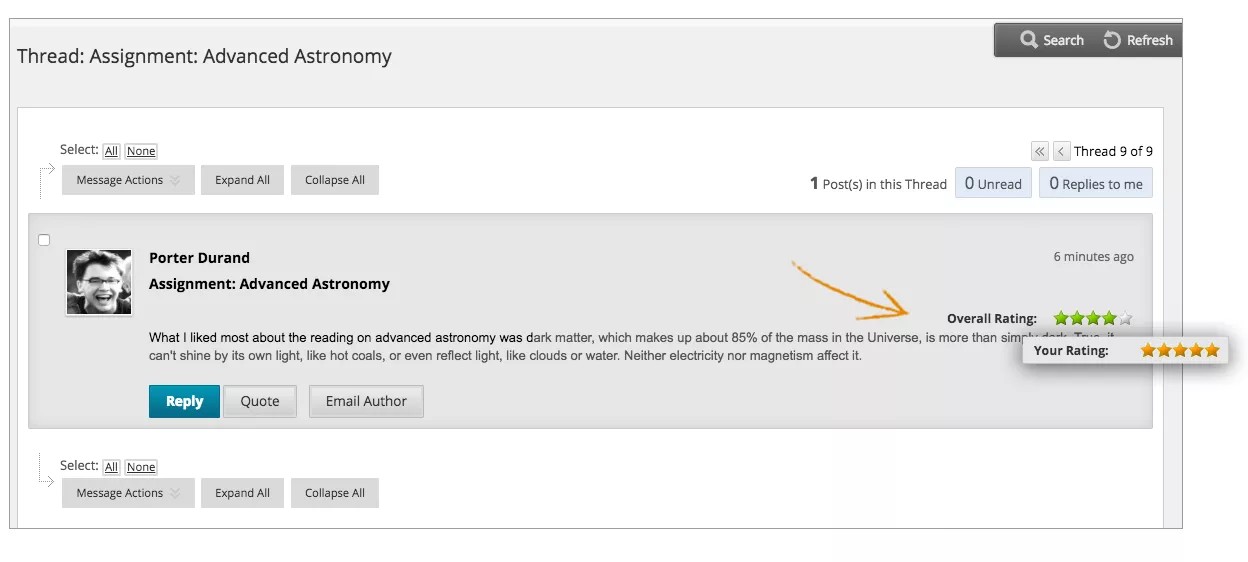In discussions, threads grow as users respond to the initial and subsequent posts. Replies build on one another to construct a conversation. As the number of posts grows, users can filter, sort, collect, and tag posts, if tagging is enabled.
Discussion etiquette
To help students understand your expectations, establish discussion etiquette immediately. You can model proper online interaction and reinforce appropriate behavior with public recognition. In addition, you can provide specific guidelines:
- Use descriptive subject lines to make threads easy to follow and scan.
- Keep posts short and use plain language. Your audience is reading onscreen and may have several messages to read.
- Support your statements with evidence when you agree or disagree with others.
- Use professional language, including proper grammar, in academic-related posts. No slang, emoticons, or chat acronyms allowed.
- Use attachments or links to websites for long, detailed information.
- Stay on topic. If you want to introduce a new tangent, find a suitable forum or start a new thread if allowed.
- Be respectful of other people's opinions and remember the golden rule—to treat others as you want to be treated.
For graded forums and threads, tell students specifically what you expect both in terms of quantity and quality of posts. You can even share some exemplary posts. You can also use rubrics to help students understand your objectives.
Reply to a thread
Users can reply to published threads, but can't reply to locked or hidden threads.
- Open a thread inside a forum.
- On the thread's page, you can view the text of the post and information, such as the author and posted date. All replies appear on the same page with the parent post.
- Point to the post to see options such as Reply, Quote, Edit, Delete, and Email Author. The Quote option includes the post's text as part of your reply. Select Reply. If you want to view only the unread posts in the thread, select Unread. The unread posts appear on one page.
- The page expands below the post you're responding to. You can view the post and access the editor.
- If needed, edit the Subject. Type your reply in the Message box. You can also attach a file.
- After the Message box, you can attach a file. Select Browse My Computer to upload a file from your computer. You can also upload a file from the course's file repository: Course Files or the Content Collection.
Files that students upload aren't saved to the file repository.
- Select Save Draft to store a draft of the post or select Submit to publish your reply.
On the thread page, your reply appears at the end of the list. If you attached a file, a paper clip icon appears next to the post's title. If you used the Insert/Edit Image option, the image appears with the text.
Rate posts
The discussion board can also be used for peer review. Students start threads and include their work in their initial posts. Other users review the work, assign a rating to the initial post, and include comments in a response.
Rating posts also helps users focus on messages that others consider especially informative or useful. If you enabled rating, users can rate posts with a five-star system. You can also rate posts.
You must enable Allow Members to Rate Posts in forum settings for this option to appear.
- Open a thread inside a forum.
- On the thread's page, when you point to a thread's rating area, it changes to show Your Rating.
- Select one to five stars. You can add and remove stars at any time.
- Your rating is included in the Overall Rating—the combined rating of all users.

